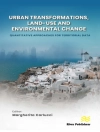This specially curated collection features three reviews of current and key research on nutraceuticals in fruit and vegetables.
The first chapter provides a brief description of the chemistry of bioactive compounds (BCs) and their presence in temperate fruits, and discusses recent advances in strategies towards improving sustainable crop production for nutraceuticals. It examines polyphenols, carotenoids, vitamin C and production practices that influence bioactive compound synthesis.
The second chapter describes the claimed health benefits associated with the antioxidant properties of bioactive compounds found in mangoes, such as vitamin C, phenolics and carotenoids. The chapter also examines specific cell, animal and clinical studies that suggest mango pulp, juice and extract are effective against metabolic diseases and certain forms of cancer.
The final chapter considers how developments such as genetic dissection using fruit ripening mutants, new transgenic plants, and molecular breeding have opened a road map for scientists to further unravel the intricacies and regulation of genes governing fruit quality attributes. Improvements in precision in engineering plant genomes have enabled development of novel tomatoes with marketable traits such as higher carotenoid and anthocyanin content, both beneficial for human health.
Tabella dei contenuti
Chapter 1 – Bioactive/nutraceutical compounds in fruit that optimize human health benefits: Federica Blando and Miriana Durante, Institute of Sciences of Food Production (ISPA), Italy; and B. Dave Oomah, formerly Pacific Agri-Food Research Centre, Canada; 1 Introduction 2 Polyphenols 3 Carotenoids 4 Vitamin C 5 Production practices that influence bioactive compound synthesis 6 Future trends and conclusion 7 Where to look for further information 8 References
Chapter 2 – The nutritional and nutraceutical/functional properties of mangoes: Laurent Urban, University of Avignon, France; Mônica Maria de Almeida Lopes and Maria Raquel Alcântara de Miranda, Federal University of Ceará, Brazil; 1 Introduction 2 Health benefits of mango fruits 3 Increasing phytochemical concentrations in mango fruits 4 Pre- and post-harvest factors influencing bioactive compounds of mango fruits 5 Case study: low fluence pulsed light to enhance mango phytochemical content 6 Future trends and conclusion 7 Where to look for further information 8 References
Chapter 3 – Genetic engineering of tomato to improve nutritional quality, resistance to abiotic and biotic stresses, and for non-food applications: B. Kaur and A. K. Handa, Purdue University, USA; and A. K. Mattoo, USDA-ARS, USA; 1 Introduction 2 History of tomato transformation and challenges 3 Genetic engineering of tomato for fruit quality and shelf life 4 Abiotic stress tolerance in tomato 5 Biotic stress tolerance 6 Tomato as a model system for biopharming 7 Future trends and conclusion 8 Where to look for further information 9 Acknowledgements 10 References
Circa l’autore
Dr Autar Mattoo is Research Leader of the Vegetable Laboratory at the USDA’s Henry A. Wallace Research Center, USA is internationally-renowned for his research on tomato physiology.












